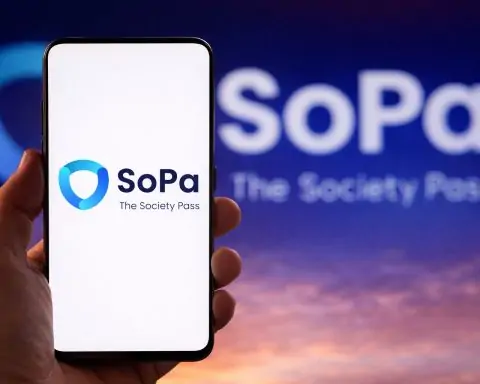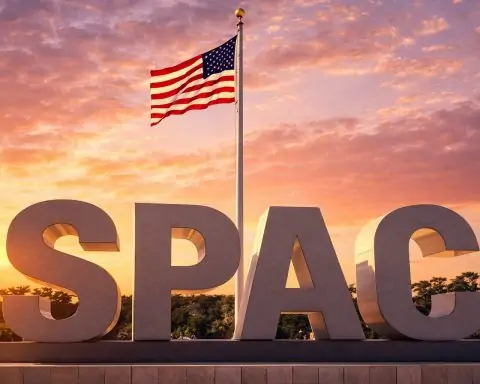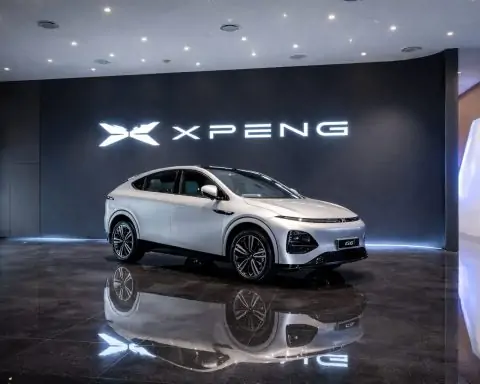- Cell Metabolism reports that gut bacteria–produced D-lactate leaks into the bloodstream to drive hepatic overproduction of glucose and fat, and a safe polymer trap in the gut bound D-lactate to improve blood sugar, insulin resistance, and fatty liver in obese mice (senior author Professor Jonathan Schertzer).
- Baylor College of Medicine researchers show metformin’s brain action: suppression of Rap1 in the hypothalamus is required for glucose lowering, with Rap1-lacking mice unresponsive to low-dose metformin and brain infusion lowering blood sugar in diabetics (Science Advances; lead author Dr. Makoto Fukuda).
- A global study of over 100,000 youths links first smartphone ownership by age 12 or younger to higher risks of suicidal thoughts, aggression, and poor emotional regulation in young adulthood (Sapien Labs; Tara Thiagarajan).
- The red supergiant DFK 52 is surrounded by a 1.4-light-year bubble of gas and dust—about a Sun’s mass—likely ejected ~4,000 years ago, uncovered with ALMA and studied by Mark Siebert, with a possible unseen companion explaining the mass loss.
- NASA’s Webb telescope, with Hubble, observed interstellar comet 3I/ATLAS; Webb captured it on Aug 6 using the Near-Infrared Spectrograph, while SPHEREx and other telescopes track its size, chemistry, and origin (third-known interstellar visitor).
- University of Washington researchers unveiled an AI climate model that simulates 1,000 years of Earth’s climate in 12 hours on a single processor, using two neural networks for atmosphere and ocean and trained on historical data (AGU Advances, Aug 25).
- The TrustNet Framework for AI trust, published in Nature, analyzes over 34,000 trust-related studies to guide interdisciplinary research on bias, accountability, and reliability (Roger Mayer, NC State University).
- Google announces Gemini for Government via the GSA OneGov program at $0.47 per agency for a year (through 2026), giving U.S. federal agencies access to Gemini models and AI tools.
- An Israeli fossil from Skhul Cave reveals a 140,000-year-old child with both Homo sapiens and Neanderthal traits, about five years old, reshaping the timeline of human-Neanderthal mating (led by Israel Hershkovitz; published in L’Anthropologie).
- Google’s Sycamore quantum processor, at 70 qubits, simulated a gauge theory to visualize strings and flux tubes binding particles, observing confinement-like dynamics (Nature; collaboration with Technical University of Munich; authors Michael Knap and Pedram Roushan).
In the past two days, the science world has witnessed major breakthroughs across disciplines – from health and medicine to space, climate, AI, biology, chemistry, and physics. Below we recap the most significant developments (August 25–26, 2025), with expert insights and primary sources.
Health & Medicine
- Microbiome “Fuel” for Diabetes: Canadian researchers discovered that a little-known molecule produced by gut bacteria (D-lactate) leaks into the bloodstream and drives the liver to overproduce glucose and fat [1]. By administering a safe polymer “trap” in the gut to bind this microbial D-lactate, obese mice showed dramatic improvements – lower blood sugar, reduced insulin resistance, and less fatty liver damage [2]. “This is a completely new way to think about treating metabolic diseases… instead of targeting hormones or the liver directly, we’re intercepting a microbial fuel source before it can do harm,” said Professor Jonathan Schertzer, the study’s senior author [3]. Published in Cell Metabolism, the finding opens the door to microbiome-based therapies for type 2 diabetes and fatty liver disease.
- Metformin’s Hidden Brain Pathway: After 60 years of use, scientists finally illuminated how metformin – the world’s most-prescribed type 2 diabetes drug – works in the brain. A team at Baylor College of Medicine found metformin’s glucose-lowering effect hinges on suppressing a protein called Rap1 in the hypothalamus [4] [5]. Genetically engineered mice lacking Rap1 in a key brain region became unresponsive to low-dose metformin, whereas infusing tiny metformin doses directly into the brain of diabetic mice sharply lowered their blood sugar [6]. “This discovery changes how we think about metformin – it’s not just working in the liver or gut, it’s also acting in the brain,” said Dr. Makoto Fukuda, the study’s lead author [7]. The work (published in Science Advances) suggests future diabetes treatments could target this brain pathway to achieve metformin’s benefits more precisely [8].
- Smartphones and Youth Mental Health: A global study of over 100,000 young people has linked early smartphone ownership to serious mental health risks in later years. The research found that 18–24 year-olds who got their first phone at age 12 or younger were far more likely to report suicidal thoughts, aggression, poor emotional regulation, and low self-worth in young adulthood [9]. The data suggest early social media exposure, cyberbullying, sleep disruption, and family strain as contributing factors [10] [11]. “Our data indicate that early smartphone ownership—and the social media access it often brings—is linked with a profound shift in mind health and wellbeing in early adulthood,” said neuroscientist Dr. Tara Thiagarajan of Sapien Labs, lead author of the study [12]. The authors urge a precautionary approach – including age restrictions for smartphones, digital literacy education, and greater corporate accountability – to protect children’s “mind health” [13].
Space & Astronomy
- Red Supergiant’s Giant Bubble (Next Supernova?): Astronomers in Sweden and Spain have discovered a vast bubble of gas and dust (1.4 light-years across) surrounding the red supergiant star DFK 52 [14] [15]. The bubble, containing a Sun’s worth of mass, was likely blown out by a violent stellar eruption ~4,000 years ago – yet the star survived [16] [17]. Using the ALMA observatory, the team was astonished by the find. “We got a big surprise when we saw what ALMA was showing us. The star is more or less a twin of Betelgeuse, but it’s surrounded by a vast, messy bubble of material,” said lead researcher Mark Siebert of Chalmers University [18]. How DFK 52 shed so much mass without exploding is a mystery – one possibility is an unseen companion star helping to blast off the outer layers [19]. The team is now watching closely: red supergiants like this are in late life and expected to go supernova, perhaps making DFK 52 one of the Milky Way’s next big stellar explosions (though “next” could still be within a million years) [20].
- Webb Telescope Eyes an Interstellar Visitor: NASA’s James Webb Space Telescope has joined forces with Hubble to observe comet 3I/ATLAS, only the third-known interstellar comet to enter our solar system [21]. Webb’s Near-Infrared Spectrograph captured the comet on Aug 6 and is helping analyze its size, chemical makeup and origin [22]. A preprint of the findings is already online, and NASA notes that multiple space telescopes (including the newly launched SPHEREx mission) are tracking 3I/ATLAS [23]. While the comet poses no threat to Earth, this coordinated campaign provides a rare peek at the composition of a comet born outside our solar system [24] – offering clues about other star systems. Such interstellar visitors are fleeting; ATLAS is just passing through, so Webb and others are racing to gather data before it fades into the cosmic dark.
Environment & Climate
- AI Climatology – 1,000-Year Simulation in a Day: In a marriage of climate science and AI, University of Washington researchers unveiled a new artificial intelligence climate model that can simulate 1,000 years of Earth’s current climate in just 12 hours [25]. The model, described in AGU Advances (Aug 25), runs on a single processor – by contrast, traditional supercomputer models would take ~90 days to do the same [26]. It works by combining two neural networks (one each for atmosphere and ocean) and was trained on historical weather data [27]. Despite being trained only for short-term forecasts, the AI learned to capture longer-term seasonal patterns [28]. “We are developing a tool that examines the variability in our current climate to help answer [the] lingering question: Is a given [extreme] event the kind of thing that happens naturally, or not?” said atmospheric scientist Prof. Dale Durran, senior author of the study [29]. This deep learning Earth system model could help scientists rapidly test how often “100-year” floods or droughts might occur under current conditions, potentially improving climate risk assessment and seasonal forecasting.
- Climate Change Fingerprints on Disasters: Scientists are also highlighting advances in extreme weather attribution – the real-time analysis of how climate change influences disasters. The World Weather Attribution (WWA) network has pioneered methods since 2014 to quickly estimate if human-induced climate warming boosted the likelihood or severity of an event [30] [31]. In recent studies, WWA teams found clear climate change fingerprints on 2025’s deadly record rainfall in the U.S. and the severe Amazon drought of 2023, among others [32]. These rapid analyses, conducted within days or weeks of an event, fill an important gap: “By the time [traditional] studies would come out, everyone had forgotten about the event,” explains Dr. Clair Barnes, a WWA statistician [33]. With attribution science, when extreme floods, heatwaves or wildfires strike, scientists can now inform the public while the conversation is still going on about whether climate change played a role [34]. Such evidence is increasingly vital for understanding the true costs of global warming – and for driving home the urgency of climate action.
Artificial Intelligence
- Can We Trust AI? A global team of researchers – spanning fields from computer science to psychology – has proposed a new framework to tackle one of the era’s burning questions: How can we determine if AI systems are trustworthy? In an open-access Nature article, the team introduces the “TrustNet Framework,” a structured approach for studying and boosting trust in AI across disciplines [35]. “Companies, governments and everyday people are adopting AI tools… but it’s still not clear whether this is a technology that is actually trustworthy,” said co-author Roger Mayer, a professor at NC State University [36]. “If we’re going to use AI to make meaningful decisions… trust is a critical consideration” [37]. The framework calls for transdisciplinary research – integrating technical, ethical, and social perspectives – to address issues like AI bias, misinformation, accountability and even how AI systems might trust each other [38] [39]. By analyzing over 34,000 trust-related studies, the authors identified a need for closer collaboration between fields and outlined key components (problem transformation, knowledge generation, and integration into practice) to guide future research [40]. As AI takes on bigger roles in society, this initiative aims to ensure our trust in AI is well-placed.
- Google’s Gemini AI for Government – at $0.47: In a bid to accelerate public sector AI adoption, Google announced a landmark deal to offer its next-generation Gemini AI platform to U.S. federal agencies at virtually no cost. Through a partnership with the General Services Administration (GSA), Google’s new “Gemini for Government” program will give federal employees access to the company’s top AI models and tools – including advanced chatbots, image and video generation, and custom AI agents – for just $0.47 per agency for the first year [41]. “Priced at less than $0.50 per government agency for a year, this comprehensive package enables U.S. government employees to access Google’s leading AI offerings at very little cost,” the company noted [42]. The promo deal (available through 2026) is part of the GSA’s OneGov initiative and the national AI Action Plan [43] [44]. It significantly undercuts other providers (some charge $1 per agency) [45] [46]. While largely symbolic in revenue, the move signals a strategic push to familiarize government workers with Google’s AI ecosystem. It also raises questions about future vendor lock-in, as the government’s digital transformation ramps up [47]. Bottom line: for under 50 cents, U.S. agencies get a year of cutting-edge AI – from Google’s upcoming Gemini large-language models to its cloud-based “AI agents” – showing just how intensely tech firms are competing to dominate the AI landscape.
Biology & Ecology
- Earliest Human–Neanderthal Hybrid Fossil: A stunning paleoanthropology finding is rewriting the story of when Homo sapiens first mingled with Neanderthals. An international team led by Tel Aviv University announced the discovery that a 140,000-year-old child’s skeleton found in Israel’s Skhūl Cave is the earliest known fossil with both modern human and Neanderthal traits [48] [49]. “The fossil we studied is the earliest known physical evidence of mating between Neanderthals and Homo sapiens,” said Prof. Israel Hershkovitz, the lead author [50]. The child, about five years old at death, was originally unearthed in the 1930s, but new high-resolution scans of its skull and jaw revealed a mix of features: a braincase shape like Homo sapiens, but inner ear and jaw anatomy characteristic of Neanderthals [51]. Until now, genetic studies showed interbreeding happened around 60,000–50,000 years ago (after modern humans reached Europe) [52]. This fossil pushes hybridization back by ~100,000 years, indicating Neanderthals were already present in the Middle East and interbreeding with expanding modern humans much earlier [53]. In fact, Neanderthals may have lived in the region as far back as 400,000 years ago [54]. The finding, published in L’Anthropologie, suggests a long period of biological and cultural interactions: these early encounters left a genetic legacy that all humans today still carry [55]. It’s a dramatic example of how new analyses of old fossils can change our understanding of human evolution.
- Ant Wars & Coffee Farms: Ecologists have spent 30 years studying ants on a Puerto Rican coffee farm – and their latest results reveal chaos might be key to eco-friendly pest control. Researchers from the University of Michigan analyzed interactions among three ant species and a parasitic fly, finding that their competitive dynamics form a “chaotic” network where any one of the four species can dominate at a given time [56] [57]. In classical ecology terms, the system exhibits predator-mediated coexistence and rock-paper-scissors style loops: one ant beats another, which beats a third, which in turn beats the first [58]. When a fly that preys on the top ant enters the mix, dominance continually oscillates in unpredictable cycles [59] [60]. Why does this matter? Two of these ant species happen to be major predators of coffee pests (like the coffee berry borer beetle) [61]. Farmers would love to harness them as natural biocontrol – but the chaotic competition makes their populations tough to predict and manage. “We would like to be able to predict when the ants are going to be there [to fight pests], and when they’re not… and it turns out that that kind of prediction is going to be pretty difficult,” said Prof. John Vandermeer, who co-led the study [62]. Still, mapping this complexity is a step toward pesticide-free agriculture. The findings, published in PNAS, show that to “use the rules of ecology” on farms, scientists must first unravel those rules – even when they lead to organized chaos [63] [64].
- New 3D Genome “Organizer” (Fertility & Cancer): In cellular biology, a Japanese team has discovered a novel protein complex that helps organize DNA in 3D – with implications for both sperm development and cancer. The researchers at Kyoto University’s ASHBi Institute identified STAG3-cohesin, a previously unknown variant of the cohesin complex, which appears essential for the unique chromatin architecture of spermatogonial stem cells (the stem cells that give rise to sperm) [65]. Mice lacking the STAG3 protein in these cells showed a failure to properly form sperm, effectively causing infertility [66] [67]. Intriguingly, the scientists also found STAG3-cohesin active in certain human immune cells – B lymphocytes – and notably overactive in B-cell lymphomas (a blood cancer) [68] [69]. In lab experiments, blocking STAG3 slowed the growth of lymphoma cells, suggesting a potential therapeutic target [70]. This is the first time a mitotic cohesin with STAG3 has been described; previously, STAG3 was thought to appear only in meiosis (sperm and egg formation) [71]. The discovery, published in Nature Structural & Molecular Biology, opens a fresh avenue to explore how 3D genome folding influences cell fate. As Prof. Mitinori Saitou, senior author, noted, simply altering STAG3 levels shifted stem cells’ balance in testes – hinting that controlling this “DNA organizer” could one day aid reproductive medicine or curb cancers [72] [73].
Chemistry & Materials Science
- Liquid Carbon Created in the Lab: For the first time ever, scientists have created and probed liquid carbon on Earth – a form of carbon so extreme that it usually can’t exist outside a planet’s core or a nuclear explosion. Carbon, famously, does not melt at standard pressure; it goes straight from solid (graphite/diamond) to gas. Only under ultrahigh pressures and ~4,500 °C (carbon’s estimated melting point, the highest of any element) will it liquefy – conditions no container can survive [74]. Now, an international team led by Germany’s HZDR institute achieved the feat using a high-powered laser at the European XFEL X-ray laser facility. In nanosecond pulses, the laser’s shock-wave briefly liquefied a carbon sample, and XFEL’s ultrashort X-ray flashes captured snapshots of the fluid before it vaporized [75] [76]. The result, published in Nature, is a wealth of data on carbon’s most elusive phase. The team observed that liquid carbon’s atomic structure resembles that of diamond but in a disordered, “water-like” network – each atom is temporarily bonded to four neighbors, much like the tetrahedral structure of diamond [77]. “This is the first time we have ever been able to observe the structure of liquid carbon experimentally. Our experiment confirms the predictions made by simulations… We are looking at a complex form of liquid, comparable to water, that has very special structural properties,” said Prof. Dominik Kraus, who led the project [78]. They also pinned down carbon’s exact melting point by watching the solid-to-liquid transition in real time [79]. Why it matters: Carbon’s behavior at extreme conditions underpins everything from planetary interiors (think diamond rain on icy giants) to fusion reactors. With this breakthrough, scientists can now test theoretical models of carbon at the most extreme states of matter – and the techniques developed (combining high-energy lasers with femtosecond X-ray diffraction) pave the way to study other materials at the edge of existence [80].
Physics
- Quantum Computer Simulates “Hidden Strings” of the Universe: In a remarkable demonstration of quantum computing’s scientific muscle, researchers used Google’s Sycamore quantum processor to simulate fundamental physics phenomena that were previously beyond reach [81]. A collaboration between Google Quantum AI and academic scientists (led by Technical University of Munich) succeeded in recreating a gauge theory – a class of theories describing particle interactions – on a quantum computer [82] [83]. Essentially, they programmed the processor to model how subatomic particles and the invisible “strings” (flux tubes) connecting them behave, fluctuate, and break under different conditions [84] [85]. This allowed direct observation of complex quantum behaviors analogous to those in high-energy particle collisions, all within a controlled lab setting. “Our work shows how quantum computers can help us explore the fundamental rules that govern our universe,” said co-author Prof. Michael Knap of TUM, emphasizing the importance of testing physics theories in new ways [86]. By tuning parameters in the quantum simulation, the team watched the “strings” confining particles tighten, oscillate or snap – mirroring how the strong nuclear force is theorized to bind quarks into protons and neutrons [87]. These hallmark behaviors, reported in Nature, prove that even today’s early quantum machines can tackle meaningful slices of quantum field theory [88] [89]. Pedram Roushan of Google noted this is a step toward using quantum computers to probe the fabric of space-time and other deep questions in physics [90]. While classical supercomputers struggle with such problems as they scale up, quantum computers promise a new window into the most fundamental forces of nature – and this experiment provides a tantalizing first glimpse through the lens of 70 qubits.
Sources: Primary research publications and press releases are cited inline. For further details, see the referenced journal papers and official announcements [91] [92] [93] [94] [95] [96] [97] [98] [99] [100] [101] [102] [103] [104]. Each development highlights how fast-moving and interconnected science has become – from the tiniest proteins and particles to the grand scale of space and climate – all within just 48 hours of discovery.
References
1. scitechdaily.com, 2. scitechdaily.com, 3. scitechdaily.com, 4. scitechdaily.com, 5. scitechdaily.com, 6. scitechdaily.com, 7. scitechdaily.com, 8. scitechdaily.com, 9. www.eurekalert.org, 10. www.eurekalert.org, 11. www.eurekalert.org, 12. www.eurekalert.org, 13. www.eurekalert.org, 14. www.sciencedaily.com, 15. www.sciencedaily.com, 16. www.sciencedaily.com, 17. www.sciencedaily.com, 18. www.sciencedaily.com, 19. www.sciencedaily.com, 20. www.sciencedaily.com, 21. science.nasa.gov, 22. science.nasa.gov, 23. science.nasa.gov, 24. science.nasa.gov, 25. www.washington.edu, 26. www.washington.edu, 27. www.washington.edu, 28. www.washington.edu, 29. www.washington.edu, 30. news.mongabay.com, 31. news.mongabay.com, 32. news.mongabay.com, 33. news.mongabay.com, 34. news.mongabay.com, 35. news.ncsu.edu, 36. news.ncsu.edu, 37. news.ncsu.edu, 38. news.ncsu.edu, 39. news.ncsu.edu, 40. news.ncsu.edu, 41. cloud.google.com, 42. cloud.google.com, 43. cloud.google.com, 44. cloud.google.com, 45. fedscoop.com, 46. www.pymnts.com, 47. www.artificialintelligence-news.com, 48. sciencedaily.com, 49. sciencedaily.com, 50. sciencedaily.com, 51. sciencedaily.com, 52. sciencedaily.com, 53. sciencedaily.com, 54. sciencedaily.com, 55. sciencedaily.com, 56. phys.org, 57. phys.org, 58. phys.org, 59. phys.org, 60. phys.org, 61. phys.org, 62. phys.org, 63. phys.org, 64. phys.org, 65. www.eurekalert.org, 66. www.eurekalert.org, 67. www.eurekalert.org, 68. www.eurekalert.org, 69. www.eurekalert.org, 70. www.eurekalert.org, 71. www.eurekalert.org, 72. www.eurekalert.org, 73. www.eurekalert.org, 74. www.xfel.eu, 75. www.xfel.eu, 76. www.xfel.eu, 77. www.xfel.eu, 78. www.xfel.eu, 79. www.xfel.eu, 80. www.xfel.eu, 81. www.sciencedaily.com, 82. www.sciencedaily.com, 83. www.sciencedaily.com, 84. www.sciencedaily.com, 85. www.sciencedaily.com, 86. www.sciencedaily.com, 87. www.sciencedaily.com, 88. www.sciencedaily.com, 89. www.sciencedaily.com, 90. www.sciencedaily.com, 91. scitechdaily.com, 92. scitechdaily.com, 93. www.eurekalert.org, 94. www.sciencedaily.com, 95. science.nasa.gov, 96. www.washington.edu, 97. news.mongabay.com, 98. news.ncsu.edu, 99. cloud.google.com, 100. sciencedaily.com, 101. phys.org, 102. www.eurekalert.org, 103. www.xfel.eu, 104. www.sciencedaily.com










